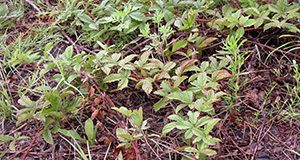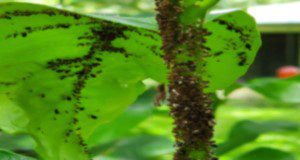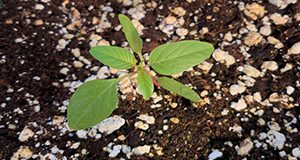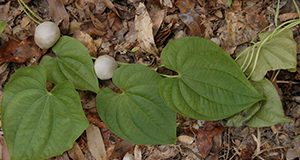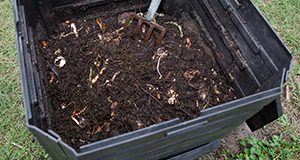Blackberry and dewberry are often viewed as nuisance weeds that reduce grazing in a portion of the pasture. However, severe financial losses can occur if these growing thickets injure cattle. This 4-page document provides information regarding blackberry and dewberry management in pastures. Written by Brent Sellers, Pratap Devkota, and Jason Ferrell, and published by the UF/IFAS Agronomy Department, revised November 2020.
https://edis.ifas.ufl.edu/ag238
Tag: Jason Ferrell
Are Homemade “Pesticides” Legal?
Interest around pesticides and possible alternatives to them have increased in recent years. As individuals seek out possible alternatives, some consider making their own solutions to pest control. Homemade pesticide recipes abound online and are commonly seen in various social media platforms. This new 3-page publication of the UF/IFAS Pesticide Information Office looks at the legality of these mixes, when and where they can be used, and what other considerations need to be taken into account when utilizing these mixes. Written by Brett Bultemeier and Jason Ferrell.
https://edis.ifas.ufl.edu/pi288
Amaranthus palmeri—Palmer Amaranth
Palmer amaranth has become one of the most troublesome weeds in the southeastern US due to its vigorous growth rate, high seed production, and development of resistance to herbicides from multiple modes of action. This 4-page publication illustrates characteristics of this weed to assist in accurate identification, proper management, and development of effective control strategies. Written by Sergio Morichetti, Jason Ferrell, and Pratap Devkota, and published by the UF/IFAS Agronomy Department, revised April 2020.
https://edis.ifas.ufl.edu/ag346
Integrated Management of Non-Native Plants in Natural Areas of Florida
While natural areas are conservation lands that have been set aside for the purpose of preserving (or restoring) native plant and animal communities, they do require active management. One of the greatest management issues in natural areas is invasive plants. This 35-page publication provides land managers in Florida with current methods used to manage non-native plants. Written by Stephen F. Enloe, Ken Langeland, Jason Ferrell, Brent Sellers, and Greg MacDonald, and published by the UF/IFAS Agronomy Department, revised July 2018.
http://edis.ifas.ufl.edu/wg209
Herbicide Residues in Manure, Compost, or Hay
When purchasing compost, it is important to understand that some manure-based products can contain herbicide residues that can affect the growth of certain plants. Manure from animals that have been fed forage treated with aminopyralid or other closely related herbicides, such as clopyralid or picloram, can be contaminated with these herbicides, which severely restrict the growth of legume and solanaceous crops and other broadleaf plants. This 3-page fact sheet discusses aminopyralid, compost, questions to ask when purchasing bulk compost or mulch, conducting a bioassay, aminopyralid injury symptoms, and steps to consider if contaminated manure or compost has been added to a garden or field site. Written by Jason Ferrell, Peter Dittmar, and Brent Sellers, and published by the UF Agronomy Department, May 2017.
http://edis.ifas.ufl.edu/ag416
Spiderwort Control in Hay Fields and Pastures
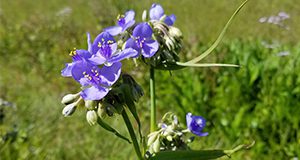
Spiderwort is a native perennial species found throughout the eastern half of the US. The plant’s large, fleshy stem creates problems for hay production. This 2-page fact sheet provides a brief overview of the plant as well as information on control through herbicide use. Written by Michael Durham, Jason Ferrell, and Brent Sellers, and published by the UF Agronomy Department, May 2016.
http://edis.ifas.ufl.edu/ag407
Creeping Indigo, A Poisonous Plant of Concern in Florida Pastures
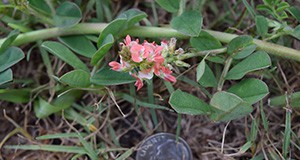 A recent rise in suspected horse poisonings has brought new attention to creeping indigo (Indigofera spicata), a toxic plant which has reportedly been in Florida for as long as 90 years. This new 5-page fact sheet covers plant description, signs of creeping indigo toxicity, and roles of creeping indigo’s toxins, as well as treatment and management. Written by Robert MacKay, Ed Jennings, Brent Sellers, Jason Ferrell, and Amanda House, and published by the UF Department of Agronomy, August 2015.
A recent rise in suspected horse poisonings has brought new attention to creeping indigo (Indigofera spicata), a toxic plant which has reportedly been in Florida for as long as 90 years. This new 5-page fact sheet covers plant description, signs of creeping indigo toxicity, and roles of creeping indigo’s toxins, as well as treatment and management. Written by Robert MacKay, Ed Jennings, Brent Sellers, Jason Ferrell, and Amanda House, and published by the UF Department of Agronomy, August 2015.
http://edis.ifas.ufl.edu/ag399
